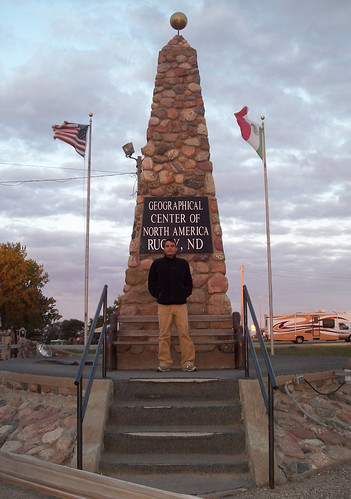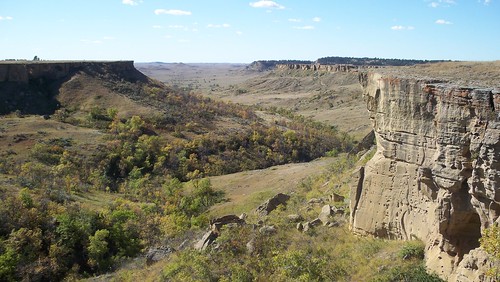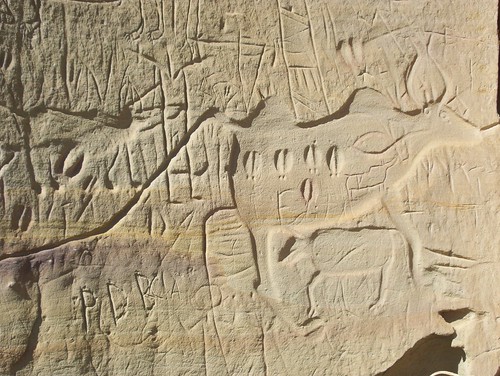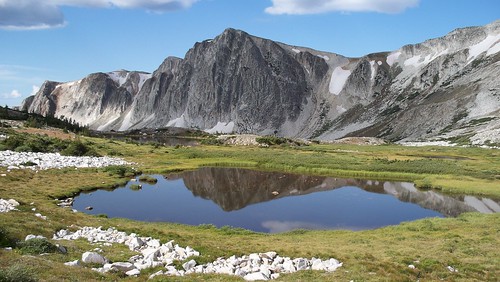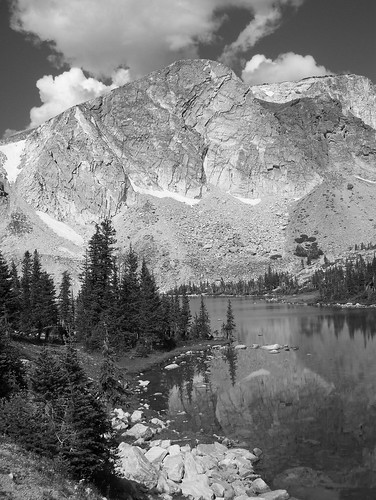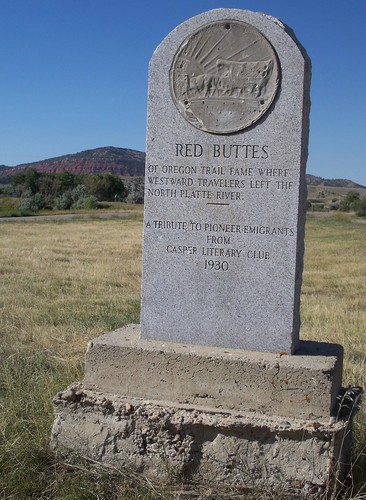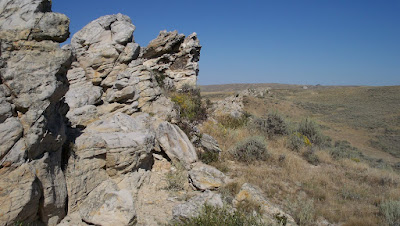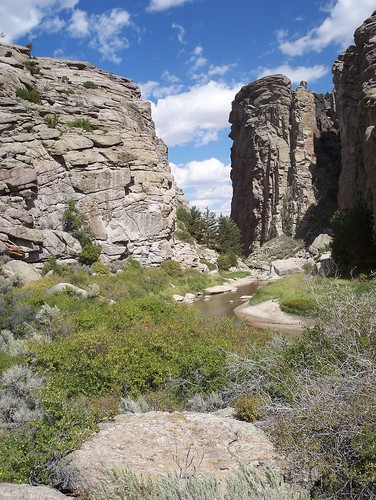Several years ago on a trip up to Theodore Roosevelt National Park, I can remember driving up US-85 and seeing signs for the Cave Hills. I was intrigued but never had the time to go and see what was there until now. Well, now that I’ve visited I wonder why I took so long in finding my way here. Wow! What a spectacular landscape. While the name Cave Hills might be a bit of a misnomer since there aren’t any true caves and the terrain is not very hilly, the area is definitely worth a visit. A better name might be the Box Canyon Plateaus since the area is a plateau incised by countless sandstone box canyons.
The interesting thing about the sides of the canyons is that there are many cave-like cracks in them in which can be found many petroglyphs. A little while back, when I knew I would be returning to Wind Cave to work for the summer, I decided to search the internet for information about the Cave Hills. What I was able to learn about them was that they are part of the Sioux Ranger District of Custer National Forest,
most of which lies in Montana. I also learned that the hills were home to one of the most significant rock art sites in South Dakota, Ludlow’s Cave. Being a fan of petroglyphs and pictographs, I knew I would have to visit!
I woke up early this morning and packed up the car for my last South Dakota road trip. I was on the road by 7:30 headed north into Rapid City to get some food and run a few quick errands. From there I headed northwest into Belle Fourche where I made a quick stop at the new and improved Geographic Center of the United States. After a photo opportunity there I pointed the car north to Buffalo, South Dakota where I would access the Cave Hills. Right off the bat, I was impressed with the scenery.
I drove a gravel road into the interior of the Cave Hills up to Riley Pass. Shortly after parking at the pass I parked the car on the side of the road to begin a hike into the unknown. I would be searching for Ludlow’s Cave. While I wasn’t sure of the exact location of the site, there was one spot on my map marked as a cave, and I decided that would be my destination for the day. Almost immediately I found one of the “caves” of the Cave Hills, a small sandstone rock shelter.
I would find many more before my day was over. I followed an old road up to the top of the plateau and got some great views of a veritable maze of small sandstone canyons.
I was impressed. I can’t believe I haven’t heard more about the Cave Hills before.
After following some ridge top roads for a while, I came to a muddy stock pond swarming with cows. I dropped down into a nearby canyon and found an interesting but small sandstone arch.

I followed this cliff line for a while and when I started to see quite a bit of graffiti (unfortunately) I knew I was getting close to Ludlow’s Cave. As I turned a corner there it was, just like I had seen in the photos on the internet. There was a large deeply incised petroglyph of a bison cow and calf
and carving left by a soldier on the 1874 Custer Black Hills Expedition.

A closer inspection revealed a warrior with a shield, elk tracks,
and an unknown creature pecked into the rock
but somewhat obscured by modern graffiti. It was an amazing site!
I spent a few minutes quietly contemplating the scene before me, before making my way back to my car.
Along the way I inspected some other cliff lines and found a few more faint petroglyphs pecked into the rock.
I was pretty tired by the time I got back to the car. I then headed farther north to the Picnic Springs Campground where I’m camped for the night. I am amazed by this place called the Cave Hills. There is something really special about them and I know I must get back here again some time to explore some more!





